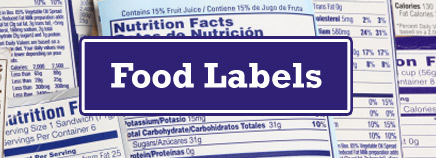Last updated on Jun 11, 2015
By Natasha Pulaski and Jeanine Rivituso
Contributing Writers
When you buy a food labeled “All Natural,” what exactly are you getting? Quite frankly, when this term is printed on a food label in the U.S, the word “Natural” has no regulated definition. The Food and Drug Administration (FDA) has yet to develop a definition for the use of this term, which means any package can bear the term “All Natural” without having to answer to any regulation.
It’s easy to get pulled into buying a product based on what the label says. Most of us do this every single day. After all, that is what a label is intended to do. Some label claims are regulated by the FDA or monitored by the industry and have a clear criteria. However, others have almost no meaning at all; it’s simply marketing tactics. Unfortunately, consumers are exposed to numerous misleading labels everyday. This article will help you navigate through your grocer with ease and have you interpreting the food label like a pro in no time.
- Natural. Except when being used to describe meat or poultry, the term natural can mean any number of different things when describing a product. According to the USDA, “natural” meat and poultry contain no artificial ingredients or added color and are minimally processed.
- Certified USDA Organic. Any multi-ingredient product bearing the USDA Organic seal must contain at least 95 percent organic ingredients. However, the federal certification process
is voluntary and not every product that claims to be organic undergoes such scrutiny. Buyer Beware: if you are truly looking for an organic product. - Non- GMO. According to the Non GMO Project, GMO or genetically modified organisms are organisms that have been created through biotechnology (also known as genetic engineering or GE). Relative to food, it refers to food or food items that have been made with ingredients that have been genetically engineered. If you are looking to eat GMO free, you will find foods labeled with the Non-GMO Project stamp for approval.
- Made with organic ingredients. At least 70 percent of the ingredients must be organic. The product cannot carry the USDA Organic seal.
- Non- or –free (example, fat, sugar, cholesterol or sodium free). Must have less than the following per serving: fat (0.5 gram), sugar (0.5 gram), cholesterol (2mg), or sodium (5mg).
- Low- (example, low fat, cholesterol, or sodium). Generally, the product must have less than the following per serving: fat (3 grams), cholesterol (20 mg), or sodium (140 mg).
- Reduced. Generally, the product must have at least 25 percent less of the given component than is typically found in that type of food.
- Light. If at least half of the product’s calories come from fat, it must be reduced by at least 50 percent per serving. If less than half of the calories are from fat, it must be reduced at least 50 percent or calories reduced at least 33, per serving.




Be First to Comment